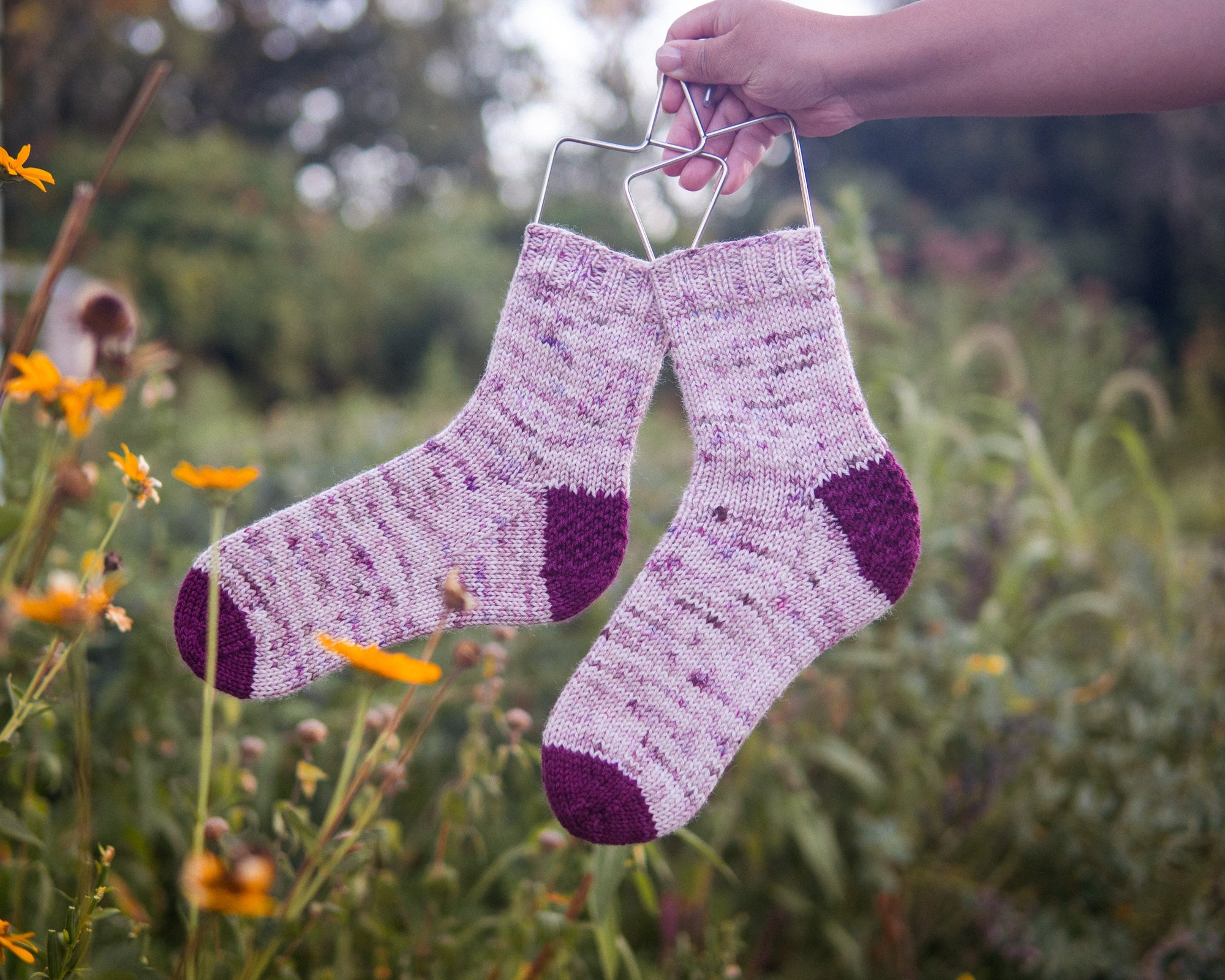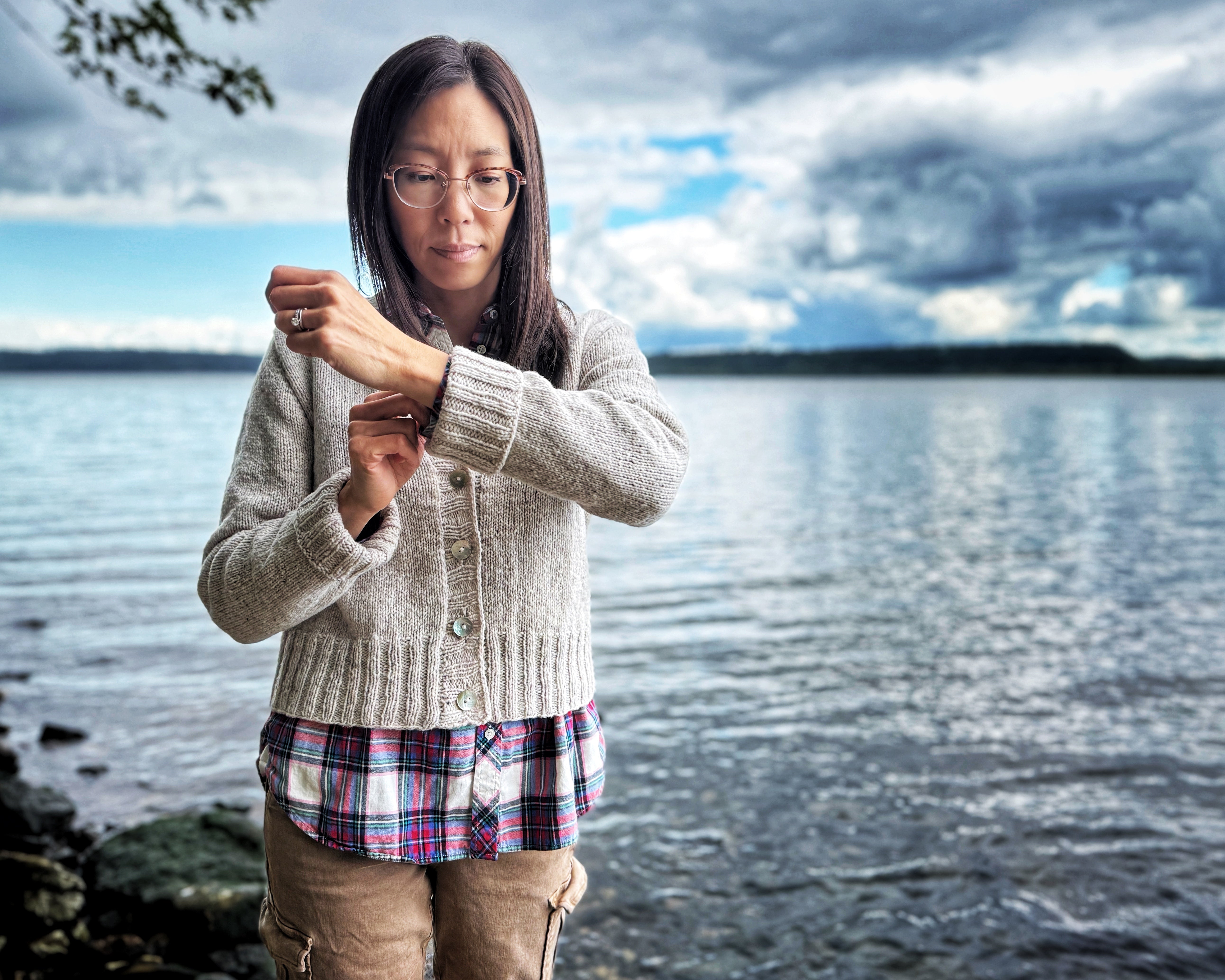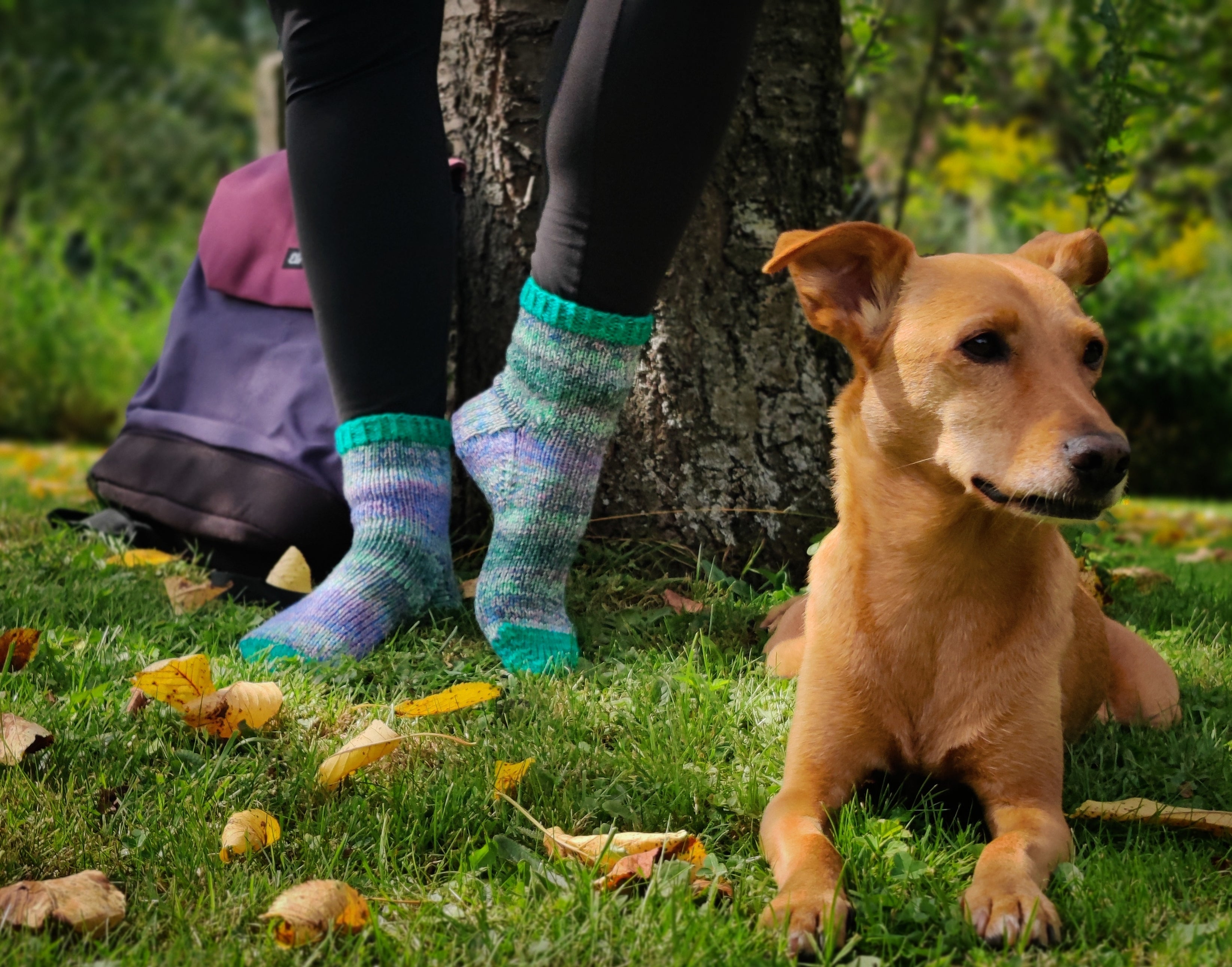
Choosing the best yarns for knitting socks that last
I don't know about you, but I'm terribly into knitting socks, which is good, because I cannot seem to make socks last. I shuffle my feet as I walk, and even though I walk around the house with slippers on, I'm still one of those people that wears out my socks and can't make them last a long time.
So, I've really spent a lot of time thinking about how to choose the best yarn to make everyday socks last just that little bit longer for me.
My journey to find the perfect sock yarn has not been straightforward, because this is a surprisingly controversial topic! There's a lot of schools of thought when it comes to making sock yarn choices that are great for daily wear, and which fibers and spinning processes are most advantageous.
If you're like me and you are looking to find the best sock yarn for longevity, I've got you. Let's talk through the best type of yarn for different personal preferences, and different styles of sock knitters and sock wearers, as well as the different schools of thought. And finally, we'll cover some of my favorite actual sock yarns for knitting durable socks.
Making socks that last is a combination of choosing the right blend of wool, how that wool is processed and spun, and the way we knit yarn to ensure longevity. So let's get to it!

Choosing fibers for sock knitting
At the core of choosing a sock yarn is your fiber choice. For most of us knitters, we already know the benefits of wool, and the most common sock yarns on the market are a superwash merino and nylon blend.
A good sock yarn will stand the test of time through abrasion. Holes in socks happen because the fibers that make up the yarn escape from the twist of the yarn. And one of the first things we can do to choose the right yarn for our sock knitting is starting from the fiber.
What about Merino?
While Merino yarn is ubiquitous for sock yarns on the market today, I actually prefer longer-stapled yarns. Merino is very fine and soft, and is an excellent choice for the most comfortable socks, but they aren't the fiber that will really last.
This is because Merino is relatively fine and short stapled. Every lock coming off the sheep has a staple length, and as they are worn in yarn form, the longer the staple length, the less weak points there are for the end of the fiber to poke out and escape, thus creating holes.

Shown above is a staple length of a lock from a Cormo fleece in my collection. This was a long one!
Longer-lasting alternatives to Merino
To find a good alternative to merino sock yarn, you can go one of the following paths:
-
Use a well tested, known to to be super strong non-specific wool blend from a trusted brand. I really like Regia's sock yarns for this--those socks can be put through the washing machine and dryer and come out just perfect. They are a good choice for knitting for people who aren't able to take care of their socks by hand washing.
-
Go for a wool breed that is known for having a combination of great, unique qualities for sock knitting. For example, BFL (Blue-Faced Leicester Wool; we have a BFL + nylon base here, by La Bien Aimee, shown below) is almost as soft as merino, with the same natural bounce that makes them suitable for sock knitting, but have longer staple lengths! Other wool breeds that I recommend are Dorset or Romney (Snowdonia by Garthenor is a good base that is mostly Romney), which are both known for being really strong, and also felting-resistant, which makes them great for heavy wear socks.
Superwash or non-superwash?
Superwash yarns can be great for many applications, including for sock yarn, but they aren't the only option. You can knit great socks out of non-superwash wools like the one by Garthenor mentioned above, and they will be much warmer as well. Because they haven't been coated in polymer and they haven't had the crimp chemically stretched out of them, they'll have better recovery, retaining their original shape better, and last longer due to the way the fabric melds together.
To nylon or not to nylon?
Nylon blend yarns are said to be stronger, because nylon can be extruded at any staple length you want, making them a stronger fiber. The durability of nylon isn't really universally agreed upon though, because some folks feel that they are so strong that under pressure, their fibers can slice up your wool fibers and make them that much less durable.
I don't have as much of an opinion on this, but for me personally, a good blend of nylon and superwash wool tends to last longer for me than the same spec of superwash wool without the nylon. Your mileage may vary though!
Other synthetic materials like different types of polyesters are a popular choice in big box yarn stores like Michaels, and formerly JoAnn (RIP, JoAnn, you'll always be in our hearts). They are also really durable and can create some really nice socks for everyday wear that rivals the durability of commercial socks.
Twist and ply

Shown is our Adventure Days Socks pattern.
Next to the fiber content, to me the next most important factors of choosing a truly excellent yarn for your hand-knit socks are twist and ply count. You want a yarn that is highly twisted, but not so highly twisted that it's like a rope and doesn't make a comfortable pair of socks. You also want a yarn that has more plies. The more plies there are in a sock yarn, the more plies you have that hold together when one breaks and fails.
Many of the common sock bases that hand dyers dye on aren't properly labeled with a ply count, and many of them (including some we carry) are just 2 plies. I have friends for whom this is a perfect choice and will last them years and years, but personally I do need something with at least 3 plies, preferably 4.
If you are using the super common Merino sock yarn and your skin cannot tolerate anything less fine than Merino, this is where you can make up a lot of ground. By selecting something with a little bit of nylon, and at least 3 plies, your socks stand a much better chance.
Some of our favorite 3 or more ply sock yarns include A Knitter's Homestead DK Sock, Big Little Yarn Co's Trusty Sock, and Sunday Fiber Co's wonderful eco-superwash sock yarn base, Barefoot Sock, a great yarn that's superwashed with natural fibers in a more environmentally friendly way.
Knitting techniques for long-lasting socks
My final tips for making hand-knitted socks that last are some that I unfortunately very much dislike... it's a good idea to knit your socks at a tighter gauge. The denser the fabric, the less the yarn and fibers have a chance to shift around and create abrasion. To make truly long lasting handmade socks, try using US0 for the standard fingering weight sock weight yarns, and sizing up, rather than US1 or 1.5.
I typically design for US1 or 1.5 for a sock that comes out at 32 sts over 4" / 10 cm, because that's the most common gauge that people like to knit at, but for my own personal sock drawer, I confess that I actually go denser, up to 34-36 sts over the same distance. The knitting process does take a lot longer, but it's well worth it in the end when I have perfect pairs of dense, sturdy socks that feel amazing and last longer.
Finally, if you can make socks that have a comfortable fit, and not too much ease (positive or negative), your socks will stand a better chance. Finished socks that mold perfectly to your feet will move around less in your shoes, and thus take on less abrasion. To me, the most important thing for choosing fit for longevity happens in the heels--the heels go through a lot of wear and tear in socks that don't fit.
Finally…
We hope that this blog has given you some ideas for your next pair of wool socks. Whether it is your first pair or hundredth pair, there's a great sock yarn out there for everyone.
As you can see, there is not really one best option or yarn type for everyone, but if you are an avid sock knitter, then you know that there are as many preferences for sock yarn as there are sock knitters.
We hope that this article has helped you figure out what the puzzle pieces might be for your perfect yarn for knitting your next favorite set of socks.
As a sock designer, I love a good vanilla sock, so I have two vanilla sock patterns that are free with purchase of sock wool yarn, called the Cafe Socks and the Adventure Days Socks. If vanilla socks are not for you, you can also browse all our sock patterns!






Leave a comment
This site is protected by hCaptcha and the hCaptcha Privacy Policy and Terms of Service apply.